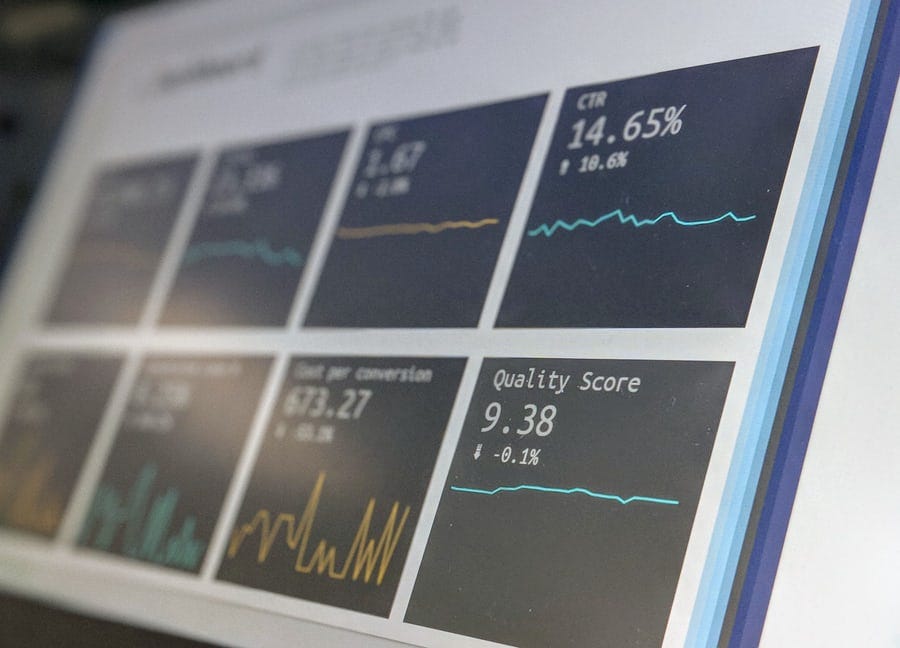Moderation is key in everything.
Too much of a good thing can get dangerous. From exercise to the fad of ‘clean eating’, these so called, ‘un-harmful habits’ can turn into an unhealthy lifestyle ruled by orthorexia and obsession.
Same thing in the markets. Too much tinkering, pondering, manipulation, stipulation and observance can be deadly to your gains.
The terms, asset allocation and risk management are thrown around the personal finance world for a reason. They are intended to help you understand when to sell out of a position or buy into a position, most notably buy low, sell high or in simple terms, ‘buy the dip’.
Yet buying and holding aren’t as bad as they seem especially when the market is nearing all-time highs. Rebalancing regularly can get you into the danger zone of actively investing, where an investor or shall I say, gambler attempts to manipulate the market by timing it.
They chart price and volume instead of focusing on the long-term vision based on fundamentals diving into undervalued stocks with a high intrinsic value relative to the market as a passive investor would. Since historically active investors loose more money and don’t beat out passive investors, rebalancing might not be the smart way to go especially in this euphoric mania market where gains and high expectations about reopening are already baked into securities and can’t seem to go any higher until a bust.

Why Rebalance?
Rebalancing is necessary to confirm your investments are aligned with your goals.
What does this actually mean?
So your hard earned money doesn’t fall off track and loose more than you contributed.
Just like babysitting a child, it’s always advised to check up on it every few hours, let alone every few minutes to make sure it isn’t hungry, tired or choking itself to death. The markets aren’t as cute as children but can be as annoying so it’s smart to check-in with your holdings once in a while to determine if reallocation (allocating an appropriate split of your money into different asset classes based on your risk tolerance) is necessary.
Every few minutes is considered day trading nonsense style which 9.9 times out of 10 gets you nowhere. Timing the markets usually doesn’t work. You cannot control it so don’t bother with it. It’s like weighing yourself every hour. You know it will fluctuate and you’ll only see gradual improvement overtime. No matter if there’s a downturn to correction or 10-year rally as we’ve seen in the longest bull run in history, I prefer to check up on my baby (investment portfolio) every other week or so to keep me sane.
The market will handle itself.
This is suggested timing especially for the less risk averse, more aggressive investors since their portfolio is more volatile and prone to losses due to a heavy equity weighting. Yet everyone is different and some of my colleagues in their 20s prefer to never check theirs since they already know the markets will go up and down daily but overtime they will eventually keep climbing mirroring the broader indexes. That’s why I always suggest buying into a low-cost index fund or ETF such as the Vanguard S&P 500 Index Fund: VFIAX that keeps you sane and stable for years.
You have a choice to do less work and see stable returns or do more work, cause headaches and return less. It’s surprising to notice that a majority of retail traders and HFT (high frequency traders) mostly include youngsters who don’t seem to mind doing more work for less.
All in all, it’s your choice on how much attention you want to give your account but rebalancing isn’t always a smart move because you are trying too hard and cannot do much about it.

Rebalancing Trouble
Ultimately, you want to sell securities that have risen in value and buy assets whose value has declined. This strategy will put you in the best seat for a desired weighting.
Rebalancing is a huge emotional anchor and part of the logic behind rebalancing is that it maintains the level of risk the investor is comfortable with. It feels strange not to do anything with your money yet it’s important to remember that your money is already working for you in the markets. You have to be rational and use your first instincts.
Yes, if you have individual stock picks that are declining and going bust, then I would advise to sell but slight price changes and volatility swings here and there shouldn’t lure you into exiting a position leading you to pay income tax on your gains in under a year.
Staying put is less risky than skewing the desired balance between relatively safe investments, highly rated bonds and riskier assets like stocks.
Identifying your risk tolerance is the first step to take before embarking on a rebalance to make sure you are aligned with why you’re invested in the first place.
Risk tolerance is determined by:
-Age
-How much willing to loose
-How much depend on market
-When panning on withdrawing funds/using it
-Time horizon
-Short and long-term debt obligations
-Liquidity ratio
-Dependents
-Tax structure
Rebalancing is seen as a classic safe activity performed by advisors to achieve consistent returns. It’s also a sneaky way for them to keep their clients in the loop but it can revert gains especially this year as we’ve seen stocks outperform their historical average big time.
A strict rebalancing routine can help investors feel comfortable yet that anchor can be holding them back especially since most methods of selling and buying don’t work in their favor. Remember that stocks are companies.
Think back to why you purchased pieces (shares) of them.
Was it for immediate short term profits like in high frequency trading/dark-pool trading, options or to provide supplemental income in retirement to boost your future earnings?
If you’re addicted to your portfolio, swings and market charts, I suggest adopting a more conservative approach since your losses will hurt more than your gains if you are franticly checking the markets 24/7. Stick to the safest investment of all time: US Government bonds, TIPS, or boring old but steady treasury bonds. Now this is extremely conservative and will return you close to nothing like cash so I suggest adding defensible undervalued stocks with low P/Es but high intrinsic values as well into the mix. They don’t move much and offer nice returns on-top of dividends.
Large-caps are ideal for up and coming retirees. Assess who you are as an investor and never equate emotions to your financial decisions to know what moves to make.
At this time, we should be wary of growth and cyclical stocks as the Fed is planning on tapering stimulus in the coming months as the U.S. reaches full employment and inflation hits 2%. This leads bond investors to demand higher yields and as a result, higher-interest rates rise which in turn leads tech (growth) to sell off due to low current cash flow, high expected earnings growth pumped into their stock price, barely any cash on hand and their dependance on low-borrowing costs as a majority of tech companies, AREN’T profitable.
What’s in it for you?
If you tinker too hard with a masterpiece or study too hard for an exam, do you think you’ll do better?
As a second-year college student, I can confirm this strategy rarely works.
If I study too much or overflow my art piece, nothing turns out right.
Sometimes rebalancing can mean missing out on big returns. In the 12 months through April 30, SPDR S&P 500 ETF (SPY), which tracks the S&P 500 index, gained 48%, not including dividends. Investors who rebalanced in the middle of that period by selling broad stockholdings gave up substantial returns. And if they bought bonds in that rebalancing, they probably didn’t make much on that investment. The iShares Broad USD Investment Grade Corporate Bond ETF (USIG), which holds a basket of high-quality company bonds, gained 2.9%, over the 12 months through April, excluding interest payments, and slumped in the second half of that period.
As a result, too much of anything is bad.

Against the Crowd
Now, don’t get me wrong. Rebalancing goes directly against the adage used by professional investors and traders that if you own securities that are performing well, you retain them, if securities are falling behind or failed to rally as expected, dump them.
Surprisingly this past year, rebalancing has worked. With stimulus spending and a low-interest rate policy set by the Fed, this made risky asset classes such as equities winners and left bonds and fixed income with no returns.
You might be lucky this time, but don’t let that fool you in the future. Anchoring bias is a killa.
No matter how much experience you have predicting markets, the future isn’t the past and no one has a crystal ball.
As a result, focus on what you know, not how much you earned before. Look at what the Fed is up to since they swing markets, notice inflationary fears, the CPI and PPI index, the trade wars with China, Biden’s tax plan scaring investors away, climate change reports, reopening plans, supply chain constraints, bottlenecks in the vaccine rollout for the rest of the world and any systemic problems such as threats to interest rate changes that affect the economy as a whole to gauge where to place your positions.
All investors are in the same boat. Attempting to minimize risk and maximize return. No one knows more than what’s given.
Being too greedy is bad.
Ask yourself, why did you sell or buy this?
Why the heck would I get into options or buy on margin?
What do I need the money for and looking back on these positions, would I be proud I made them?
Rebalancing is an option not a rule.
I rebalance based on my predetermined price targets for individual securities and others do differently.
Follow what works for you but do not make it harder than it has to be.
Let the market work for you based on your risk tolerance not on your emotions, the crowd or timing.

